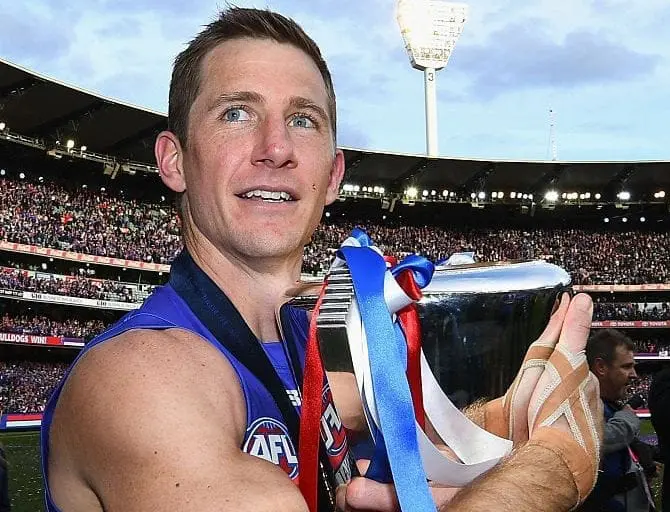As Tasmania prepares to enter the league ahead of the 2028 AFL season, concerns about the dilution of the talent pool have come to the forefront of the conversation once again. However, the impressive success of mature-age recruits raises a very relevant counterargument.
Most recently, we have seen the likes of Shaun Mannagh tear up the track in Geelong's qualifying final win against Port Adelaide, and at 35 years old, Dayne Zorko won his first premiership to go along with his two All-Australian selections. Both examples illustrate the potential of mature-age recruits, with Mannagh making his debut in Round 1 this year at age 26 and in 2012 Zorko made his debut at age 23.
Some other notable mature-age recruits include Tom Stewart, Bayley Fritsch and Tim Kelly, which only goes to show there is a whole range of untapped talent being overlooked in drafts and thriving in the state leagues.
The VFL's Fothergill-Round-Mitchell Medal is awarded to the most promising young talent in the competition, and since 2006 every winner has gone on to play at AFL level. This statistic reinforces the idea that there exists a talent pool that is deeper than some experts believe. But is it enough to sustain the addition of another AFL team? As per The Age, a recent AFL study showed that across 16 years of data, 28% of players were taken after their draft age, highlighting the potential for growth beyond traditional draft pathways.
Recent examples include premiership-winning Tiger Marlion Pickett, a mid-season rookie draftee who debuted at age 27 in the 2019 Grand Final. Callum Wilkie was passed over in four National Drafts before making his debut at age 23 and just this year took out St Kilda's best and fairest award. Rookie drafted Bulldogs champion Dale Morris, who famously played in the Western Bulldogs 2016 premiership while nursing a broken back, is another of many fairytale stories to come from mature-age recruiting.
This phenomenon raises an important question as to how many other talented players are slipping through the cracks and not being noticed by AFL scouts.

Despite these factors, many AFL pundits still express their doubts about the viability of a 19th team, stating that the talent pool simply isn't deep enough and it will therefore compromise the quality of the league going forward.
But Kevin Sheehan, the AFL's national talent manager and draft expert, talked about the varying ages which players made their debuts and the success they have had.
“We did a proper piece of analysis and that was one of the clear outcomes. It's staggered right through from your 19th year, when you might be taken, right through to a James Podsiadly who was taken at 28,” he said, per The Age.
“Jack Hayes being in that latter bracket at his age, Tim Kelly … it's a great message to all the young men in pathways around Australia that although high-profile Josh Rachele and Nick Daicos go through immediately when they are able to, there is always a place for those latter developing kids.”
Among the players to keep an eye on to make the jump from state leagues to the AFL are 2024's Fothergill-Round-Mitchell medallist Sam Davidson. Davidson played for Richmond and is now expected to follow suit from the previous winners of the award and find his way onto an AFL list.
VFL Team of the Year half-back Riley Bice, who helped lead Werribee to a premiership this year, raising eyebrows amongst recruiters. Southport Sharks' Ben Jepson, who was also named in the VFL Team of the Year, is another mature-aged chance from the VFL.

The AFL's state league affiliates' impressive track record of producing ready-made talent is telling, and the introduction of the Tasmania Devils may uncover more hidden gems.
The two newest additions to the league, GWS and the Gold Coast Suns, enjoyed a number of draft handouts at their inception, which will inevitably happen in a similar case for the Devils as well.
The Devils' entry may spark a change in recruitment strategies across the league. With multiple early draft picks expected, Tasmania will likely target top young talent, potentially depleting the pool of available youngsters for other clubs down the line. This might force established teams to adapt and look to mature-age recruits from state leagues to supplement their lists. Consequently, this shift will create greater opportunities for mature-age players who may have been overlooked in previous drafts.
Whether this is enough to sustain the high level of competition we currently have is yet to be tested, but the amount of success stories suggests it may be.
























